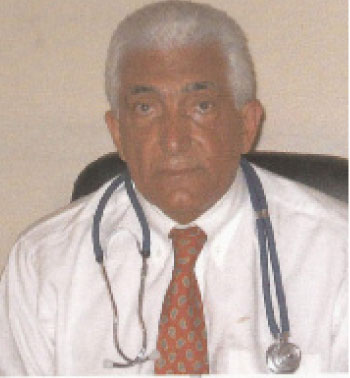
Ebola has an abrupt onset of symptoms similar to many other illnesses, including fever, chills, weakness, and body aches. Such gastrointestinal symptoms as vomiting and diarrhea are common, and in approximately 45% of cases there are haemorrhaging (serious internal and external bleeding).
The current outbreak in West Africa is cantered in the countries of Sierra Leone, Guinea, and Liberia. At least 2 cases have been reported in Nigeria.
As of August 6, 2014, there have been more than 1700 confirmed and suspected Ebola cases in these 4 countries and 932 suspected case deaths.
Recharger emphasized that this is not an easily transmissible infection but requires contact with bodily fluids from an infected individual. That places healthcare professionals working with these patients at risk.
In most Ebola outbreaks, healthcare workers are at risk for infection when strict personal safety precautions or sharps management procedures are not followed. Ebola is transmitted through direct contact with body fluids from infected patients (including but not limited to blood, sweat, faces, urine, vomits, and semen), and so avoiding contact with these materials is important
What Is the Ebola Virus?
Ebola disease—also called Ebola hemorrhagic fever or Ebola fever—is a rare and often fatal illness that humans and nonhuman primates (such as monkeys and gorillas) can contract. There have been several outbreaks of Ebola fever in Africa. There has never been a reported case of Ebola fever in people in the United States.
The Ebola virus causes Ebola fever. The virus is found in Africa and the Philippines—but, the virus from the Philippines does not cause illness in humans. The virus was named after the Ebola River in the Democratic Republic of the Congo, where it was first discovered.
The Ebola virus was discovered in 1976 and has appeared in sporadic outbreaks since then. According to the Centres for Disease Control and Prevention, there have been 2,265 reported cases of Ebola fever in humans around the world since 1976. Of these, 1,531 resulted in death
Types of Ebola Virus
There are five subtypes of Ebola virus: Ebola-Zaire, Ebola-Sudan, Ebola-Ivory- Coast, Ebola-Bundibugyo, and Ebola-Reston
All of these subtypes are found in Africa, except for Ebola-Reston, which is found in the Philippines. The Ebola-Reston virus is also the only subtype that will not cause illness in humans—it only affects animals.
How Do You Contract the Ebola Virus?
You can get the Ebola virus through direct contact with the bodily fluids of an infected animal or human. These include blood, saliva, semen, vomit, urine, or faces.
According to the World Health Organization, you can also get the virus by handling a sick or dead wild animal that has been infected with it (WHO, 2007).
There is some evidence that the Ebola virus can be spread through the air from nonhuman primate to nonhuman primate, such as monkey-to-monkey, in research facilities. No definitive studies have proven this, however.
What Are the Symptoms of Ebola Fever?
If you are exposed to the any of the African forms of the Ebola virus, you will begin to display symptoms anywhere from two to 21 days following that exposure. The onset of the illness is rapid. The initial symptoms resemble those of a common flu infection and include:
Fever, headache sore throat joint and muscle soreness weakness
As Ebola fever progresses, the symptoms become more severe. Late-stage symptoms of Ebola virus may include: vomiting diarrhoea redness in the eyes swelling of the genitals internal and external bleeding (some patients may have blood coming from their eyes, nose, mouth, ears, or rectum) a bleeding rash over the entire body
How Is Ebola Fever Diagnosed?
Ebola fever is diagnosed using blood tests to detect the Ebola virus in your blood. Your doctor may test you for the Ebola virus if you have symptoms of Ebola fever and have recently been in an area where the virus is found.
How Is Ebola Fever Treated?
There is no cure for Ebola fever. The only available treatments are those meant to help to ease your symptoms. These may include, oxygen therapy, intravenous fluids, blood transfusions, medications to treat shock, pain medications
Getting Help in the Gambia
Go to your nearest Hospital, EFSTH, any Health centre, Clinics, MRC throughout the countryright away if you develop symptoms of Ebola fever and have recently travelled to these epidemic countries in Africa or been exposed to the Ebola virus. The earlier you receive treatment, the better your chances will be for survival.
The Chances of Survival with Ebola Fever
The National Institutes of Health estimate that Ebola fever is fatal in as many as 90 percent of all infected patients (NIH, 2011). The virus infects the liver, destroys the lining of blood vessels, and causes blood clotting problems and loss of blood. Death is usually due to hypovolemic shock because of loss of blood. It is not known why some people survive Ebola fever while others do not.
How Can Ebola Fever Be Prevented?
You can lower your risk of becoming infected with the Ebola virus by avoiding locations where it is found, especially during times when there is an outbreak of Ebola fever.
The virus may be acquired upon contact with blood or bodily fluids of an infected animal (commonly monkeys or fruit bats). Spread through the air has not been documented in the natural environment.Fruit bats are believed to carry and spread the virus without being affected. Once human infection occurs, the disease may spread between people as well. Male survivors may be able to transmit the disease via semen for nearly two months. In order to make the diagnosis, typically other diseases with similar symptoms such as malaria, cholera and other viral hemorrhagic fevers are first excluded. To confirm the diagnosis blood samples are tested for viral antibodies, viral RNA, or the virus itself.
Transmission
It is not entirely clear how Ebola is spread. EVD is believed to occur after an Ebola virus is transmitted to an initial human by contact with an infected animal’s body fluids. Human-to-human transmission can occur via direct contact with blood or bodily fluids from an infected person (including embalming of an infected dead person) or by contact with contaminated medical equipment, particularly needles and syringes. Semen is infectious in survivors for up to 50 days. Transmission through oral exposure and through conjunctiva exposure is likely and has been confirmed in non-human primates. The potential for widespread EVD infections is considered low as the disease is only spread by direct contact with the secretions from someone who is showing signs of infection.The quick onset of symptoms makes it easier to identify sick individuals and limits a person’s ability to spread the disease by travelling to these countries. Because dead bodies are still infectious, some doctors disposed of them in a safe manner, despite local traditional burial rituals.
The disease has a high mortality rate: often between 50 percent and 90 percent.If an infected person survives, recovery may be quick and complete. Prolonged cases are often complicated by the occurrence of long-term problems, such as inflammation of the testicles, joint pains, muscle pains, skin peeling, or hair loss. Eye symptoms, such as light sensitivity, excess tearing and blindness have also been described. EBOV and SUDV may be able to persist in the semen of some survivors for up to seven weeks, which could give rise to infections and disease via sexual intercourse.
Key facts
•Ebola virus disease (EVD), formerly known as Ebola haemorrhagic fever, is a severe, often fatal illness in humans.
•EVD outbreaks have a case fatality rate of up to 90%.
•EVD outbreaks occur primarily in remote villages in Central and West Africa, near tropical rainforests.
•The virus is transmitted to people from wild animals and spreads in the human population through human-to-human transmission.
Severely ill patients require intensive supportive care. No licensed specific treatment or vaccine is available for use in people or animals.
Controlling infection in health-care settings
Human-to-human transmission of the Ebola virus is primarily associated with direct or indirect contact with blood and body fluids. Transmission to health-care workers has been reported when appropriate infection control measures have not been observed.
It is not always possible to identify patients with EBV early because initial symptoms may be non-specific. For this reason, it is important that health-care workers apply standard precautions consistently with all patients – regardless of their diagnosis – in all work practices at all times. These include basic hand hygiene, respiratory hygiene, and the use of personal protective equipment (according to the risk of splashes or other contact with infected materials), safe injection practices and safe burial practices.
Get help in the Gambia
Every Health facility Hospitals, Clinics, MRC are alert about Ebola disease, emergency referral facilities are provided by Health Ministry throughout the country, also you can contact Gambia WHO office for infectious disease, EFSTH and MRC throughout the country. E- Mail azadehhassan@yahoo.co.uk, text Dr Azadeh on 00220 7774469/3774469 during the working hours from 3-6 pm.
Author: DR H. Azadeh Senior Lecturer at the University of the Gambia, Senior Physician and Senior Consultant in Obstetrics & Gynaecology.




